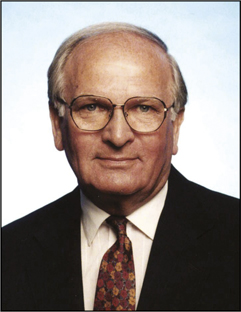John Robert Schrieffer, one of three Americans who shared the Nobel Prize in Physics for their theory explaining the underpinnings of superconductivity, died July 27 in Tallahassee, Fla. He was 88.
Schrieffer received his bachelor’s degree in physics from the Massachusetts Institute of Technology in 1953 and his doctorate from the University of Illinois at Urbana-Champaign in 1957. He taught at The University of Chicago, University of Illinois, University of Pennsylvania, University of California, Santa Barbara, and Florida State University in Tallahassee. Cornell University also appointed him to a six-year term as an Andrew D. White Professor-at-Large. He held honorary degrees from Technische Universität München and the University of Geneva.

He was a member of the American Academy of Arts & Sciences, National Academy of Sciences, American Philosophical Society, Royal Danish Academy of Sciences and Letters, and the Academy of Sciences of the USSR.
Schrieffer’s greatest accomplishment came as a graduate student in the 1950s, when he examined the question of how electrical resistance disappears in superconductors. Later, his work with Leon N. Cooper and John Bardeen would solve how electrons could be mutually attracted and paired. They came up with the B.C.S. theory of superconductivity, which led to the Nobel Prize in Physics in 1972.
His other awards included the Guggenheim Fellowship, Oliver E. Buckley Solid State Physics Prize, Comstock Prize in Physics from the National Academy of Sciences, John Ericsson Medal, University of Illinois Alumni Achievement Award, and the National Medal of Science. The focus of his later work was in the area of high-temperature superconductivity, strongly correlated electrons, and the dynamics of electrons in strong magnetic fields.


